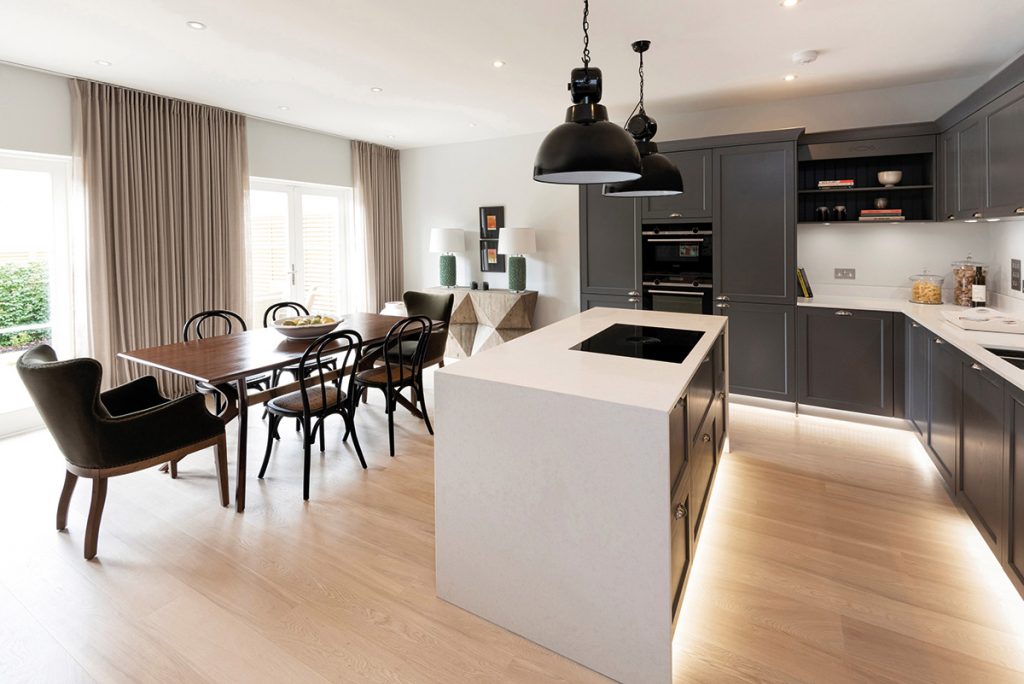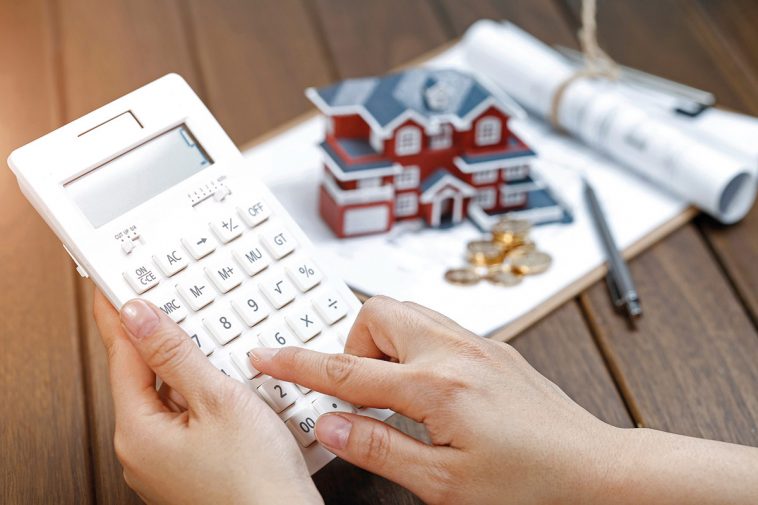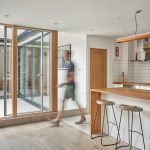All aspects of a self-build are affected by the budget. This is particularly true of the kitchen, where costs can quickly mount. So the question stands, how much does a kitchen cost?
[adrotate banner=”66″]
In this article we cover:
- What affects the cost of a kitchen
- Breakdown of different elements and cost indicators for each
- List of additional elements to add to the final price
- How much a kitchen costs on average
- Breakdown of kitchen extension costs
In the world of kitchen design and manufacture, all kitchens are created fundamentally equal. The shell, which is made up of structural units known as carcases, tends to be crafted out of laminated manmade composite materials, usually chipboard or Medium Density Fibreboard (MDF).
This ensures the interior is practical, hard wearing and easy to clean. Other elements that are hidden from view, including shelves, drawer backs and panels, also tend to be made from these materials.
[adrotate banner="58"]You should always ask what this skeleton is made of. A few manufacturers may offer carcases made from solid wood or veneered timber which are at the higher end of the cost scale.
The cost of the kitchen will therefore usually have much more to do with your choice of doors, exterior end panels and worktops than the structure upon which they’re laid.
The door style is likely to be your first costly component as it will profoundly affect the overall aesthetics and feel of the finished kitchen. Choosing a door made from a manmade composite material usually keeps costs down, the opposite is true of highly crafted or premium material doors, e.g. solid timber.
Don’t forget that appliances as well as fixtures and fittings such as water taps all need to be included in the price of the kitchen to get a full picture of cost. Indeed, a kitchen manufacturer will struggle to give you a quote without at least the room measurements and your electrical appliance list.
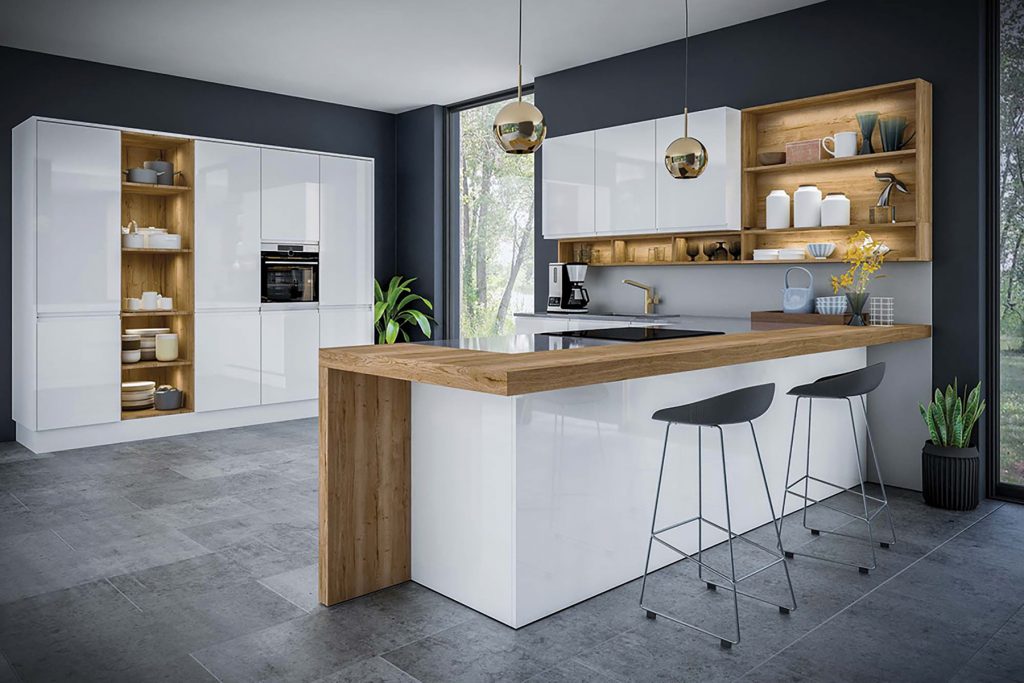
How much does a kitchen cost?
A basic kitchen might come in at 3k but when the cost of fitting and electrical appliances is added, it could increase to 8k or 10k and well beyond depending on your choice of materials. Things like solid timber doors or granite worktops will obviously inflate the figure.
So a flat pack kitchen, mass manufactured according to standard measurements, will be at the lowest end of the scale. These have a cost per unit worked up, and might only cost a couple thousand excluding appliances and accessories. A fully kitted out kitchen of this type can creep up to 10k including fitting.
But more often than not, tens of thousands are spent on a fitted kitchen. In fact, at the higher end of the market, it is not unusual to come across some kitchen companies that charge a minimum cost.
If you’re on a budget but want a designer kitchen, and if you look for long enough, you could find a second hand bargain online or buy an ex-display from a kitchen company.
Also, kitchen companies or flat pack suppliers can supply the units for your joiner to fit; this could turn out to be more cost effective than sending their fitter to do the job.
Another cost saving option is to opt for a standalone kitchen which is made up of units or pieces that can be bought separately, i.e. different pieces of furniture, and require no fitting, mostly used with free standing electrical appliances. Good if you’re creative, have a clear vision, and are able to source items individually.
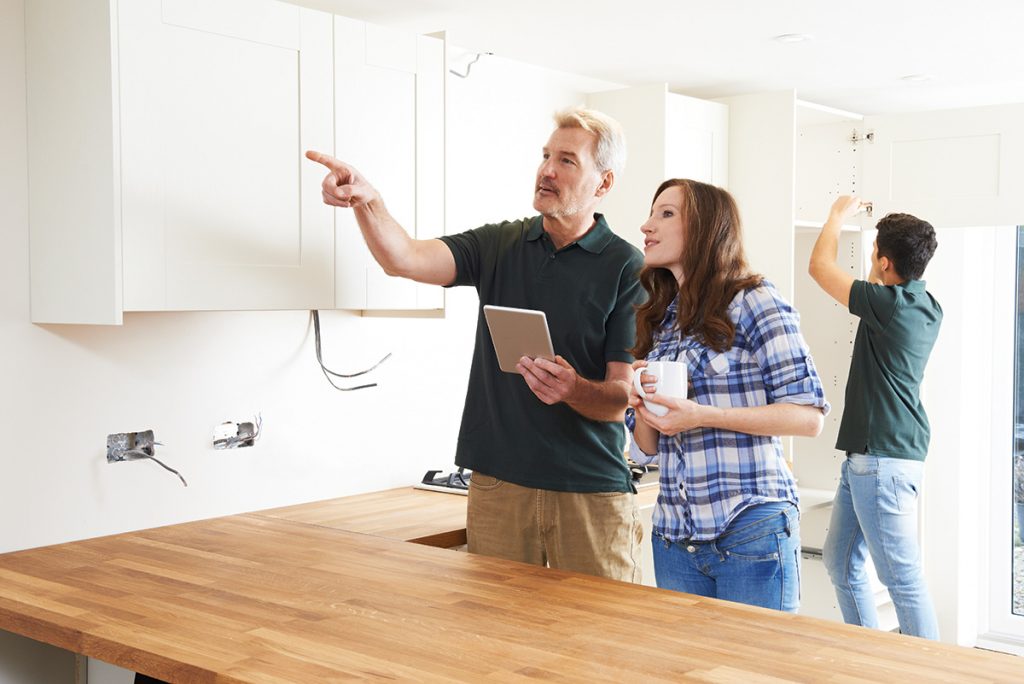
Kitchen Extension costs
Figures published by onlinetradesmen.ie in July indicate that tradesmen are currently charging €1,300/sqm or about £120/sqft to build an extension, excluding both VAT and the cost of the kitchen.
For any quote you receive, it’s important to check what is and isn’t included. Usually a build price will include the groundworks and foundations (check who pays for waste disposal), the superstructure (the building built above the foundation), and first fix (including floors and ceilings, and inserting cables for electrical supply and pipes for water supply).
Allowance for demolition, structural alterations (e.g. creating a structural opening from the existing house, often supported with a steel beam), and connection to the existing house (e.g. flashing) will be extra, up to 10k. Redesigning work, such as reworking an interior layout start from €390 per sqm. These onlinetradesmen.ie figures exclude VAT.
Oftentimes second fix and carpentry are also included (this includes finishing work, which is generally done after plastering, like fitting floorboards and architraves, doors and windows) but if it’s a build cost only, not all of these elements will be included. Always go through the finer details and get a cost breakdown.
The following is a guide based on what Irish homeowners are getting quoted for building work via the onlinetradesmen.ie service in 2021, excluding VAT:
Build costs (single storey): standard €1,300 per sqm, then with windows, lighting fixtures, standard electrics and heating included €1,900 to €2,200 per sqm. For extensive renovation work and higher specification finishes, fixings including flooring, from €2,600 to €3,000 per sqm.
Kitchen costs: the kitchen installation costs are extra. Some builders will not fit kitchens, others will offer a quote in addition to the construction work. Kitchens can start from as little as €2,400, however, a recent quote obtained for a standard kitchen of approximately seven linear meters asked for €6,500 excluding appliances and accessories.
